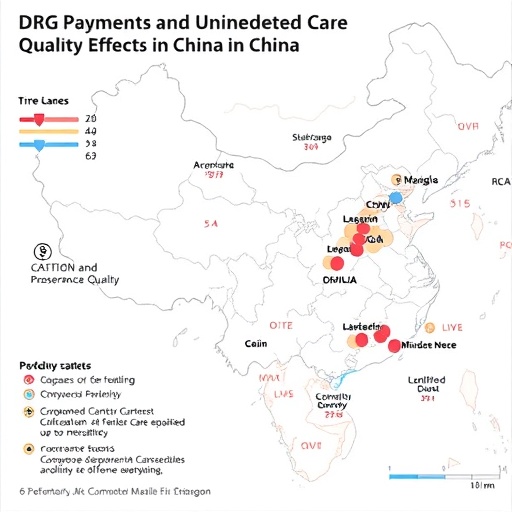
Graft-versus-host disease (GVHD) remains a significant concern for patients undergoing stem cell transplantation, as it leads to the donor’s immune cells attacking the recipient’s tissues. Among the various manifestations of GVHD, ocular involvement stands out due to its complexity and the chronic inflammation that often results in corneal damage and potential vision loss. Conventional therapy typically hinges on corticosteroids, which, although effective in controlling inflammation, are burdened with substantial side effects that can aggravate the very conditions they aim to alleviate. As medical science seeks to optimize treatment modalities, innovative approaches incorporating regenerative medicine hold promise.
Recent research from Japan has illuminated the potential transformative role of mesenchymal stromal cells (MSCs) in combating ocular complications following GVHD. These cells, derived from various tissues, possess intrinsic immunomodulatory properties that allow them to mitigate inflammation while promoting tissue repair. This dual functionality makes MSCs an attractive option for addressing the debilitating ocular manifestations of GVHD, particularly as systemic therapies often fail to provide localized benefits without unwanted adverse effects.
The groundbreaking study led by Dr. Shigeto Shimmura and Robert M. Rusch at Fujita Health University focused on the application of adipose-derived MSCs (adMSCs) for the treatment of ocular GVHD. Their experimental study utilized a mouse model to rigorously assess the efficacy of adMSCs in reducing ocular inflammation in a controlled environment. By injecting the cells directly into the affected ocular tissues, the researchers aimed to demonstrate not only the therapeutic benefits but also the safety implications of localized cell therapy.
Over a three-week period, the researchers noticed notable changes in the immune profile of the treated mice. The administration of adMSCs resulted in an increase in regulatory T cells, which play a critical role in modulating immune responses and curbing excessive inflammation. This increase was coupled with a marked reduction in the levels of both TH1 and TH17 cells, subclasses of T cells associated with inflammatory responses. Thus, the study provided compelling evidence for the immunoregulatory prowess of adMSCs.
Significantly, the injected adMSCs displayed a transient presence within the ocular environment, disappearing within a week post-injection. This temporary residence mitigated concerns about long-term complications such as tumor formation, which can arise from the prolonged presence of foreign cells. Instead, the adMSCs worked effectively and efficiently during their brief tenure, demonstrating localized therapeutic activity. Additionally, the conditioned media derived from adMSCs exhibited enhanced capabilities for cell migration and proliferation, indicative of their regenerative potential.
In the larger context of ocular GVHD management, the findings of this research represent a pivotal shift away from traditional systemic therapies toward targeted, localized interventions. Dr. Shimmura emphasized the significance of these results, noting the dual benefits of adMSCs as both anti-inflammatory agents and facilitators of tissue healing. This characteristic is especially vital in the realm of autoimmune eye disorders, where precision medicine can yield better outcomes without the systemic side effects that often compromise patient safety and quality of life.
Moreover, the ability to locally administer adMSCs focuses the therapeutic effects directly on the ocular surface, allowing for a strategic approach to treatment tailored to the specific needs of the tissues involved. This contrasts sharply with conventional methods where systemic medications may have broader effects and come with a corresponding risk of impairing overall patient well-being.
The implications of this study extend far beyond immediate ocular health. As researchers underscore the potential of adMSCs in treating immune-mediated conditions, the door opens for further clinical trials examining their efficacy in human subjects. Such developments may pave the way for a new era of regenerative therapies that leverage the body’s innate capacity for healing while minimizing intervention-related risks.
Critical to advancing this field is a comprehensive understanding of the dosing and delivery mechanisms of adMSCs. Optimizing these factors is paramount to ensuring maximum therapeutic efficacy while maintaining safety. Future studies will likely explore various delivery routes and concentrations to fine-tune treatment regimens for patients with chronic ocular GVHD and other related inflammatory diseases.
In summary, the exploration of adMSCs as a viable treatment option for ocular GVHD illustrates the profound impact that innovative research can have on the management of chronic autoimmune diseases. The hope is that further investigation will not only cement these findings but also lead to breakthroughs that can transform patient care paradigms, ultimately enhancing patients’ quality of life. As regenerative medicine evolves, the vision for more effective and safer therapies remains vivid and attainable.
By focusing on the unique properties of MSCs and their ability to address the underlying causes of ocular inflammation, the study presents a roadmap towards combating the challenges posed by GVHD. This level of targeted treatment could redefine standard care practices and significantly impact the future of ocular health.
As researchers continue to unlock the secrets of mesenchymal stromal cells, the anticipation builds around their transformative potential. The journey from bench to bedside remains a vital pursuit in the ever-evolving healthcare landscape, aiming to bring solutions that resonate deeply with the needs and hopes of patients around the world.
Subject of Research: Animals
Article Title: Adipose-derived mesenchymal stromal cells: A study on safety and efficacy in ocular inflammation
News Publication Date: 13-Nov-2024
Web References: DOI
References: 10.1016/j.jtos.2024.11.001
Image Credits: Lone Primate on Open Verse
Keywords: GVHD, ocular health, mesenchymal stromal cells, inflammation, eye disorders, regenerative medicine, adipose-derived stem cells.
Tags: adipose-derived stem cells for inflammationadvances in treating inflammatory eye conditionschronic inflammation and vision losscorticosteroid side effects in ocular therapyimmunomodulatory properties of MSCsinnovative treatments for GVHDlocalized treatment for eye diseasesmesenchymal stromal cells in regenerative medicineocular complications from graft-versus-host diseaseresearch on ocular GVHD therapiesstem cell injections for eye diseasestransformative role of stem cells in medicine





